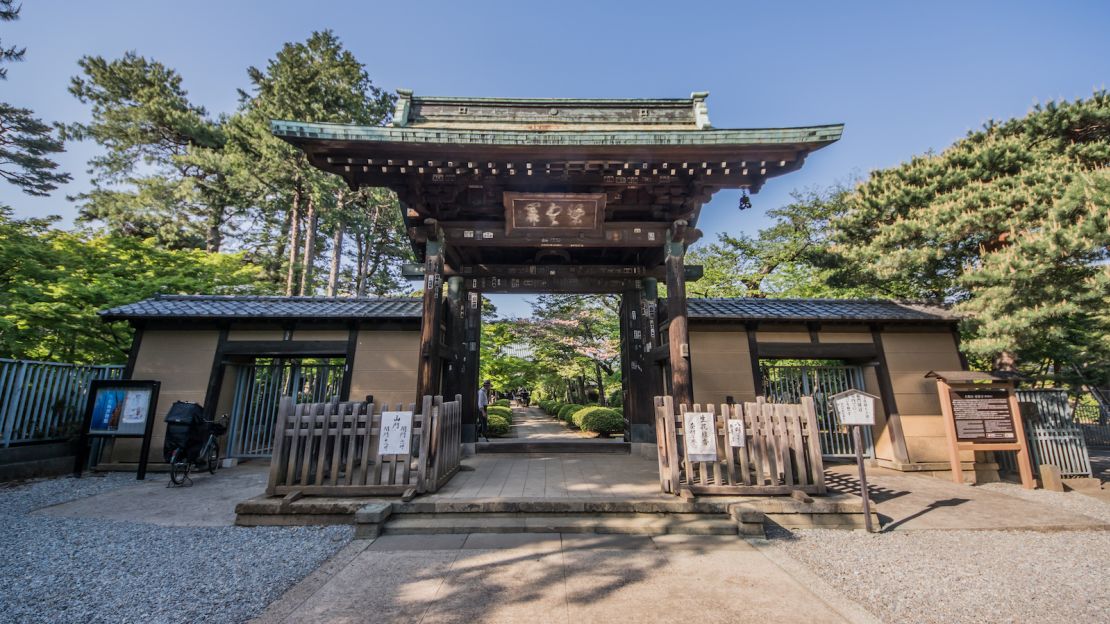The maneki-neko goes by many names.
The waving cat, the lucky cat, the beckoning cat.
There are even more variations in its meaning.
It’s generally believed a lifted left paw invites success in business, while a raised right is for protection at home.
While many may associate the talisman with Chinese business establishments, their origins actually reside in Japan.
There’s some debate as to which city holds the claim, but the most enduring legend is that of Gotokuji in Setagaya district, Tokyo, where the original feline inspiration for the figures has its own temple.
Gotokuji: Tokyo's temple of the waving cat
The maneki-neko’s origins
Nestled in the quiet neighborhood, you’ll find the temple is swarming with the smiling ceramic kittens when you travel here.
According to local lore, when the temple was a mere hut in the 1400s, the monk who overlooked it struggled to live on his meager income. Despite this, he had a cat he loved so much he even shared his meals with it. One day he asked the cat to bring good fortune.
A short time later several samurai arrived during a rain storm, explaining the cat waved them in from the road. The monk served them tea and shared his teachings. The samurais were so delighted and one announced himself as Naotaka Li, lord of Hikone, Koshu prefecture.
Having his eyes opened by the monk’s words, and considering it the will of Buddha, the lord donated rice fields and crop lands to the temple, making it the grand shrine it is today.
Years later, when the cat passed away it was enshrined as a god called Shobyo Kannon, the Goddess of Mercy, and a monument was established on the grounds for the animal.
Today visitors to Gotokuji leave the tailed talismans as a gesture of gratitude for wishes that have been fulfilled. The uniform maneki-nekos arrange to form a veritable kitty army, numbering into the thousands. Even more are available to purchase at the temple, ranging in sizes from just 3 centimeters to a foot tall to leave as an offering or take home as a good luck souvenir.
A veritable meow mix
While the feline figurines at Gotokuji Temple are uniform white, different colors denote different meanings. The traditional tri-color versions grant general prosperity, while white stands for purity, black for luck, red for protection from illness and pink for luck in love.
There are a wide variety of beliefs and specific variations when it comes to colors, such as some who think gold grants special fortune, while green is thought to aid in academics.
Mostly identical, a few Gotokuji figures stand out.
Some have dates going back years or messages written on them.
“Meow! Food!” reads one. Another sports a mini-sombrero while one wears a pearl necklace. Miniature versions occupy almost every available space, between shelves and even atop the heads of some of the larger statues.
Ruminating on what continues to drive maneki-neko enthusiasts to Gotokuji, Micha Robertson, the owner of the Lucky Cat Museum in Cincinnati, Ohio, explains that aside from the historical significance, “is the feeling that even though all of the cats on the grounds are essentially the same, each one represents a different person’s hopes or desires.”
Maneki-nekos traditionally wear a bib and bell, sometimes painted on, to represent the Gotokuji monk taking special care of his cat. They are also usually depicted holding coins, but being of a Samurai family’s temple, Gotokuji maneki-nekos are empty-handed.
In the warrior society, while the opportunity for success is offered, it is up to the person making the wish to capture it.

Getting there
Gotokuji Station is just a 15-minute train ride from Tokyo’s Shinjuku Station. Its peaceful park also boasts an impressive pagoda and reflective cemetery.
A symbol of the neighborhood, maneki-nekos line the windows of shops and homes in the charming surrounding streets.
























